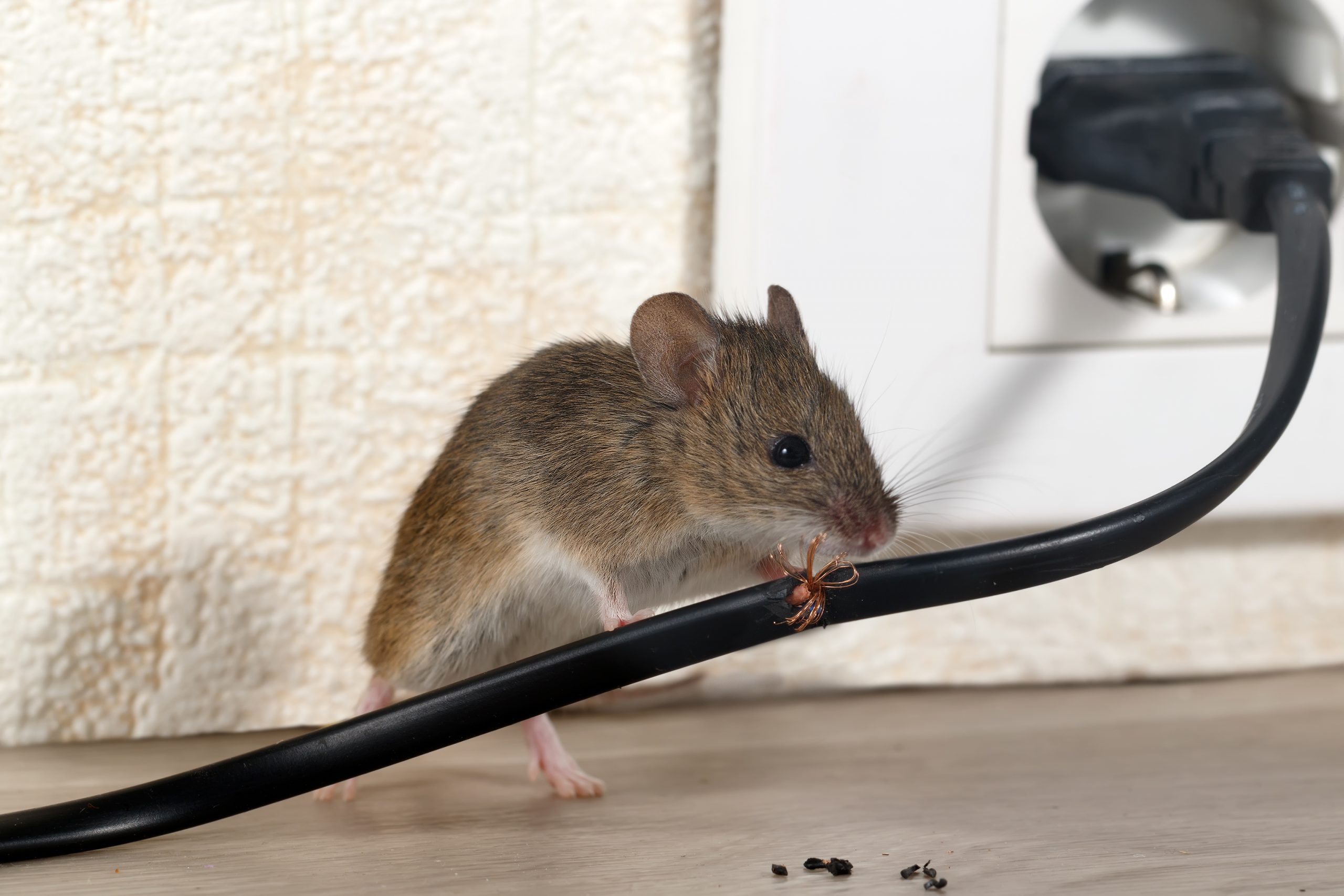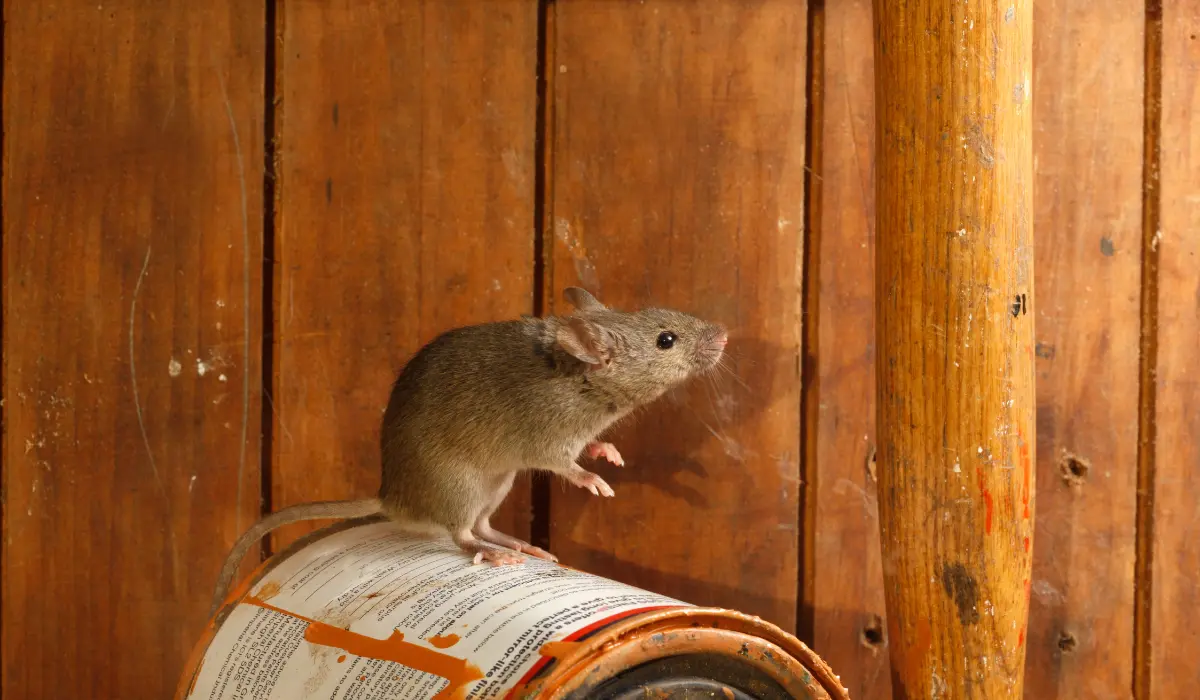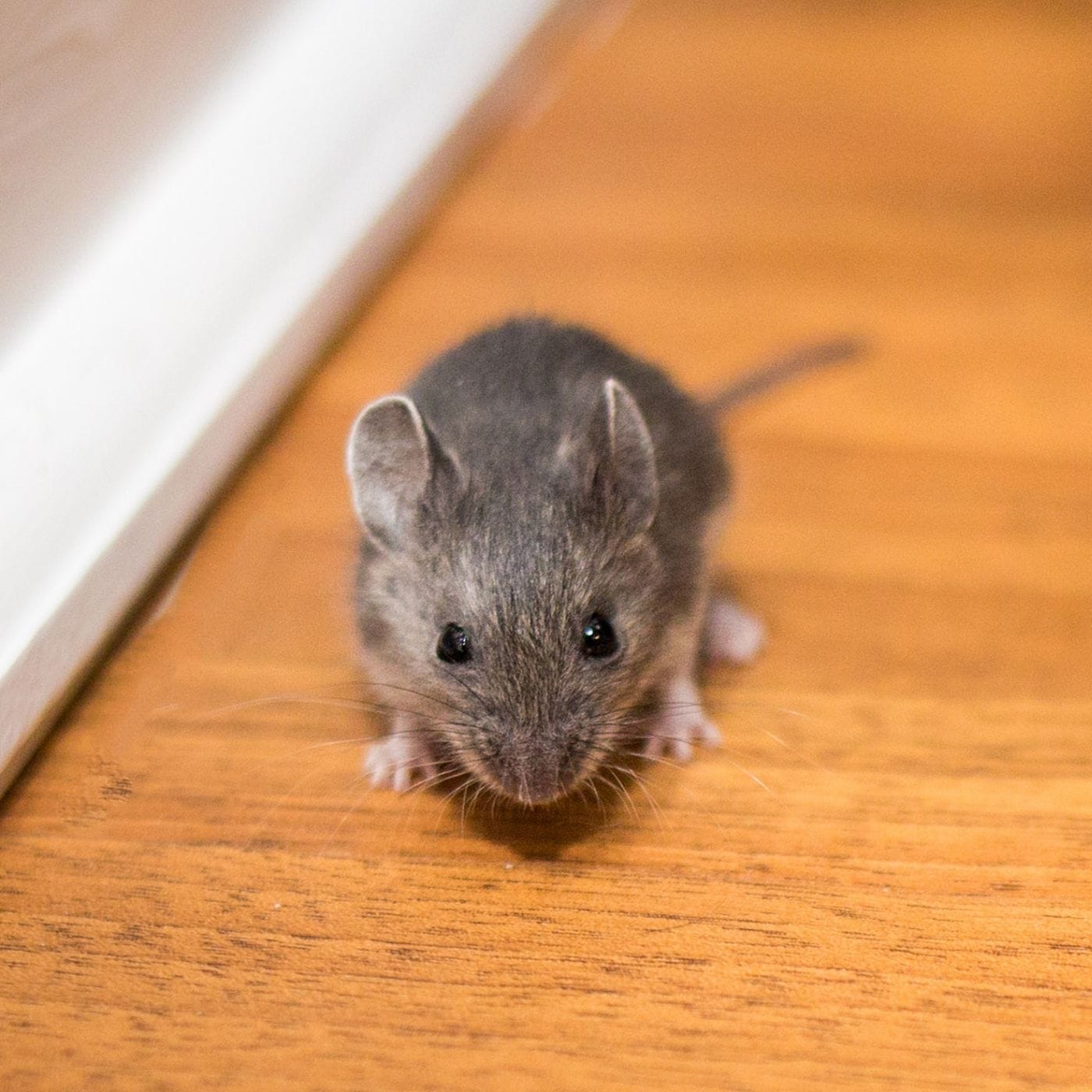Florida’s subtropical climate—featuring mild winters, year-round warmth, and substantial humidity—allows mice and other rodents to remain active and breed without the seasonal slowdowns typical in colder states. In North Port, a growing community near Florida’s Gulf Coast, mice can slip inside through small openings, seeking food, water, and shelter. Left undisturbed, these fast-breeding pests can rapidly become an infestation behind walls, in attics, or under appliances. This service page explains why mice thrive in Florida’s conditions, how to detect an infestation, and why calling a professional mice exterminator is key to safeguarding your home or business.
Whether you live in North Port or manage properties in neighboring Venice or Nokomis, spotting mice early—and using focused treatments—helps prevent occupant stress, potential property damage, and the frustrations of repeated do-it-yourself attempts that seldom address the entire mouse colony or nesting areas.
Why Mice Thrive in Florida
Mild Winter Temperatures
While harsh winter climates slow or reduce rodent populations, Florida’s gentle cold season rarely dips below freezing. This allows mice to continuously feed and reproduce indoors and outdoors. Climate-controlled buildings (65–85°F) sustain mice comfortably, so they don’t face the seasonal pauses experienced elsewhere.
Ample Food and Water
Mice are opportunistic eaters. Even small crumbs, open pet bowls, or poorly sealed trash can satisfy them. In suburban neighborhoods around North Port, Venice, or Nokomis, leftover food sources or neglected waste disposal inadvertently sustain mice. Moisture from minor leaks or condensation—common in Florida’s humid atmosphere—also helps them remain hydrated year-round.
Rapid Reproduction
A single female mouse produces multiple litters per year, each containing about five or more pups. Under Florida’s warm conditions, pups mature in roughly a month, quickly adding to the breeding population. Overlooking a few droppings or gnaw marks can spawn a large-scale infestation across multiple rooms if occupants don’t intervene promptly.
Frequent Movement of People and Goods
Florida’s steady growth, tourism, and local commerce mean goods and supplies frequently move in and out of properties, sometimes harboring hidden mice. Multi-unit housing or frequent occupant changes in short-term rentals increase the likelihood of mice traveling between neighbors if occupant vigilance wanes.
Hidden Entry Points
Mice slip through dime-sized holes in foundations, door sweeps, or utility line gaps. In older homes or structures with minimal insulation, mice can easily hide behind walls or in attic spaces. Without occupant or manager detection, they remain unseen until droppings, nighttime scratching, or chewed packaging draws attention.

Telltale Signs of a Mouse Infestation
- Droppings
- Small, rod-shaped pellets (~¼ inch long), tapering at each end.
- Often found near food sources, baseboards, or hidden corners behind stoves or fridges.
- Small, rod-shaped pellets (~¼ inch long), tapering at each end.
- Nocturnal Rustling or Squeaking
- Mice tend to scurry at night, making light scratching or squeaking sounds within walls or ceilings.
- Frequent nighttime noise usually signals a more substantial rodent presence.
- Mice tend to scurry at night, making light scratching or squeaking sounds within walls or ceilings.
- Gnaw Marks
- Mice chew cardboard, plastic containers, and even electrical wiring to wear down incisors.
- Look for ragged openings in food boxes or signs of shredded material near baseboards.
- Mice chew cardboard, plastic containers, and even electrical wiring to wear down incisors.
- Nests of Shredded Paper or Fabric
- Mice build nests using torn paper, insulation, or cloth in secluded areas—attics, basements, or closets.
- Droppings nearby confirm a live nest.
- Mice build nests using torn paper, insulation, or cloth in secluded areas—attics, basements, or closets.
- Strange Pet Behavior
- Cats or dogs staring at walls, barking at an “empty” spot, or pawing under doors may detect mice whose ears can’t hear.
- Sudden pet focus on corners often reveals hidden rodent movement.
- Cats or dogs staring at walls, barking at an “empty” spot, or pawing under doors may detect mice whose ears can’t hear.
- Musky or Ammonia-Like Odor
- Accumulated urine or droppings produce a stale smell, particularly noticeable in unventilated rooms.
- The stronger the odor, the larger the likely infestation.
- Accumulated urine or droppings produce a stale smell, particularly noticeable in unventilated rooms.
Risks of Ignoring Mice
Disease and Contamination
Mice can carry bacteria (e.g., salmonella) in droppings or saliva, contaminating countertops, stored foods, or utensils. Inhaling dust from dried feces poses respiratory hazards, especially for children, seniors, or immunocompromised individuals.
Structural and Electrical Harm
Mice gnaw wood framing, drywall, or insulation. Chewed wiring behind walls risks short circuits or possible fires. Over time, unaddressed damage necessitates major repairs, driving up occupant or insurance costs.
Rapid Population Growth
Florida’s mild winter fosters ongoing breeding. A small rodent presence quickly balloons into dozens occupying multiple rooms if occupant detection or extermination is delayed. Each new litter intensifies occupant stress and heightens property risk.
Additional Pest Problems
Rodent nests can bring fleas or ticks, further burdening occupants or pets. Larger predators—like stray cats—may also converge around a mouse-rich property, complicating occupant or manager responsibilities.
Reputation or Tenant Impact
For businesses or property managers in Venice or Nokomis, mice sightings can spark negative reviews or occupant dissatisfaction. Homeowners suffer occupant inconvenience, repeated cleaning efforts, and potential structural damage if mice remain hidden for long.
Why a Professional Mice Exterminator Is Essential
Thorough Property Evaluation
A mice exterminator checks attics, basements, behind kitchen appliances, or near plumbing lines for droppings, nests, and gnaw marks. Confirming whether you have mice or rats shapes trap type and product usage—snap traps, bait stations, or specialized solutions.
Strategic Baiting and Trapping
Professionals place snap traps or tamper-resistant bait stations in rodent runways—along walls, corners, or behind appliances—ensuring lethal captures. Random occupant attempts with unprotected poisons or unplaced traps rarely yield the same efficiency and risk occupant or pet safety.
Safe and Focused Rodenticide Use
Exterminators carefully administer rodenticides, typically within locked bait stations, to deliver lethal doses specifically to rodents. This approach minimizes occupant or pet exposure. Occupants remain safer while mice feed on poisons that eventually eradicate the colony.
Exclusion and Sealing
After removing existing mice, exterminators pinpoint and recommend sealing cracks in foundations, door sweeps, or utility line entries. Closing these holes denies fresh rodents from slipping indoors, ensuring a longer-term resolution once the current infestation is cleared.
Follow-Up and Maintenance
Because leftover pups can emerge weeks later or new mice might find unsealed gaps, many exterminators schedule re-check visits or occupant calls. Adjusting baits, re-trapping missed zones, or occupant housekeeping ensures a final rodent-free outcome.

Typical Methods for Mice Treatments
- Inspection and Infestation Mapping
- Technicians look behind appliances, in crawl spaces, attics, or basements for droppings, nests, or rub marks.
- Determining severity shapes whether localized or property-wide treatments are necessary.
- Technicians look behind appliances, in crawl spaces, attics, or basements for droppings, nests, or rub marks.
- Trapping (Snap or Live)
- Snap traps significantly reduce adult populations quickly.
- Live traps may see use in minor or specialized cases, though less typical for large infestations.
- Snap traps significantly reduce adult populations quickly.
- Bait Stations
- Secure enclosures contain rodenticides safely away from children or pets.
- Mice ingest poison, typically dying in hidden nest areas or outdoors, simplifying occupant disposal tasks.
- Secure enclosures contain rodenticides safely away from children or pets.
- Exclusion Repairs
- Technicians fill holes, add door sweeps, or caulk foundation cracks that mice exploit for entry.
- Occupant synergy cements a rodent-proof property once current mice are removed.
- Technicians fill holes, add door sweeps, or caulk foundation cracks that mice exploit for entry.
- Sanitation and Clutter Control
- Occupants store pantry goods in sealed containers, quickly discard trash, and remove any leftover scraps.
- Organizing storage spaces denies mice ready nest materials behind cardboard or piles of newspapers.
- Occupants store pantry goods in sealed containers, quickly discard trash, and remove any leftover scraps.
- Odor and Droppings Cleanup
- Removing droppings, sanitizing nest sites, and disposing of contaminated items blocks pheromone trails that can lure new mice.
- Occupants or specialized cleaning crews handle extensive disposal to ensure occupant health.
- Removing droppings, sanitizing nest sites, and disposing of contaminated items blocks pheromone trails that can lure new mice.
- Scheduled Follow-Up
- Weeks post-treatment, occupant sightings or new droppings confirm if leftover pups have matured.
- Additional baits or traps finalize occupant peace of mind that no rodents remain.
- Weeks post-treatment, occupant sightings or new droppings confirm if leftover pups have matured.
Service Areas: North Port, Venice, Nokomis
Rodents thrive in mild climates across Florida, but this page focuses on North Port, a rapidly growing city bridging southwestern Florida’s suburban developments with coastal amenities. We also serve:
- Venice: Tourist-friendly Gulf Coast living, inadvertently luring mice if occupant or staff vigilance around leftover food or open trash lags.
- Nokomis: Mixing residential comfort with easy beach access, inviting rodents to scavenge if occupant housekeeping or sealing efforts remain unaddressed.
Florida’s mild winter climate supports mice all year, so occupant synergy plus specialized exterminator interventions remain vital to removing entrenched infestations and blocking return visits.

Why Choose Us
Florida-Based Expertise
We adapt recognized rodent control measures—snap traps, enclosed bait stations, and robust exclusion—to southwestern Florida’s environment and occupant routines. By uniting occupant housekeeping (like sealed food storage, removing water sources) with advanced extermination, we yield longer-lasting results than partial occupant do-it-yourself methods.
Detailed Property Checks
Before placing traps or distributing baits, we thoroughly search basements, crawl spaces, attics, and behind appliances for droppings, nests, or gnaw marks. By identifying the problem’s extent, we direct solutions—like spot control or entire-home coverage—for the best occupant outcome.
Safe, Specialized Products
We carefully place rodenticides or snap traps in rodent runways. Using locked bait stations preserves occupant and pet safety while delivering lethal doses to mice. This approach beats scattered poison usage that can risk accidental ingestion or minimal rodent contact.
Emphasis on Exclusion and Sanitation
Removing current rodents is one piece. Occupant synergy—like sealing holes, discarding leftover food promptly, or reducing clutter—prevents new mice from returning. This occupant-professional alliance cements a rodent-resistant environment under Florida’s near-year-round mild climate.
Ongoing Support and Reassurance
Rodent pups can appear weeks after initial kills, or new mice may find unsealed cracks. Many exterminators schedule re-check occupant sightings or remain on call if fresh droppings appear, quickly pivoting baits or traps to ensure occupant relief and lasting freedom from mice.
Next Steps
Noticing droppings along baseboards, hearing scratching behind walls, or finding chewed packaging in cabinets? Contact us to learn more or schedule your service. Our mice treatments for North Port, Venice, and Nokomis blend property-wide inspections, precisely placed baits or traps, occupant-friendly sealing and organizational tips, plus vigilant follow-ups—eradicating mouse colonies while preventing new infiltrations.
Act now to protect occupant health from droppings-borne bacteria, block structural or wiring damage from gnawing, and maintain trust if you manage rentals or commercial spaces. With our Florida-focused mice exterminator expertise, we locate, remove, and prevent rodents swiftly and effectively, ensuring occupant peace of mind in southwestern Florida’s mild winters and year-round conducive climate.
Maintaining a Mouse-Free Property
Once professionals remove current mice, occupant practices keep them from returning:
- Proper Food Storage
- Transfer cereals, grains, or pet kibble into sturdy plastic or metal containers.
- Clean counters daily, removing crumb or spill temptations.
- Transfer cereals, grains, or pet kibble into sturdy plastic or metal containers.
- Eliminate Moisture
- Repair leaks under sinks or in AC drain lines, and keep rooms (like bathrooms or laundry areas) ventilated.
- Mice need minimal water—damp spots or puddles are enough to sustain them.
- Repair leaks under sinks or in AC drain lines, and keep rooms (like bathrooms or laundry areas) ventilated.
- Remove Clutter
- Organized storage denies mice the hidden nest areas behind piled boxes or papers.
- Clear, labeled bins make early detection of droppings or chew marks simpler.
- Organized storage denies mice the hidden nest areas behind piled boxes or papers.
- Check Trash Disposal
- Keep lids sealed, place bins slightly away from walls to deter rodent approach.
- Rinse containers to remove sticky residues or rotting smells that lure mice.
- Keep lids sealed, place bins slightly away from walls to deter rodent approach.
- Block Entry Points
- Install door sweeps, fill foundation cracks, or caulk utility line gaps.
- Even small dime-sized holes can let mice slip inside for food or warmth.
- Install door sweeps, fill foundation cracks, or caulk utility line gaps.
- Limit Pet Food Exposure
- Feed pets on a schedule, removing leftover kibble after mealtimes.
- Store large pet food bags off floors in sealed bins, thwarting gnaw attempts.
- Feed pets on a schedule, removing leftover kibble after mealtimes.
- Monitor for Return
- If occupant sightings or droppings reappear, contact an exterminator immediately—stopping small re-infiltrations early prevents another mass infestation.
- Quick occupant reporting and targeted professional response secure a final rodent-free environment.
- If occupant sightings or droppings reappear, contact an exterminator immediately—stopping small re-infiltrations early prevents another mass infestation.
By blending occupant vigilance—like sealing cracks, storing food properly, removing moisture—and specialized mice treatments as needed, property owners in North Port, Venice, and Nokomis robustly counter Florida’s mild winter advantages for rodents. This synergy ensures mice can’t exploit leftover crumbs or unnoticed openings, preserving occupant well-being and property integrity in every season.
